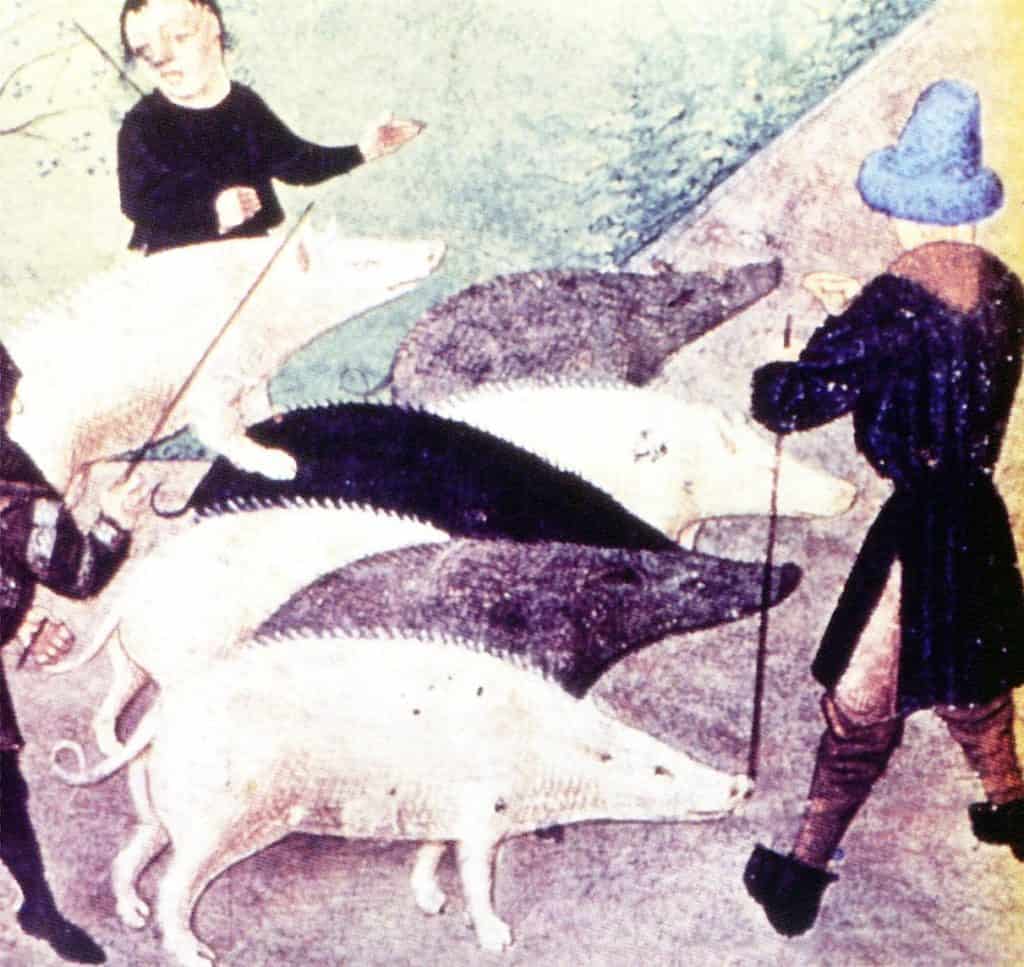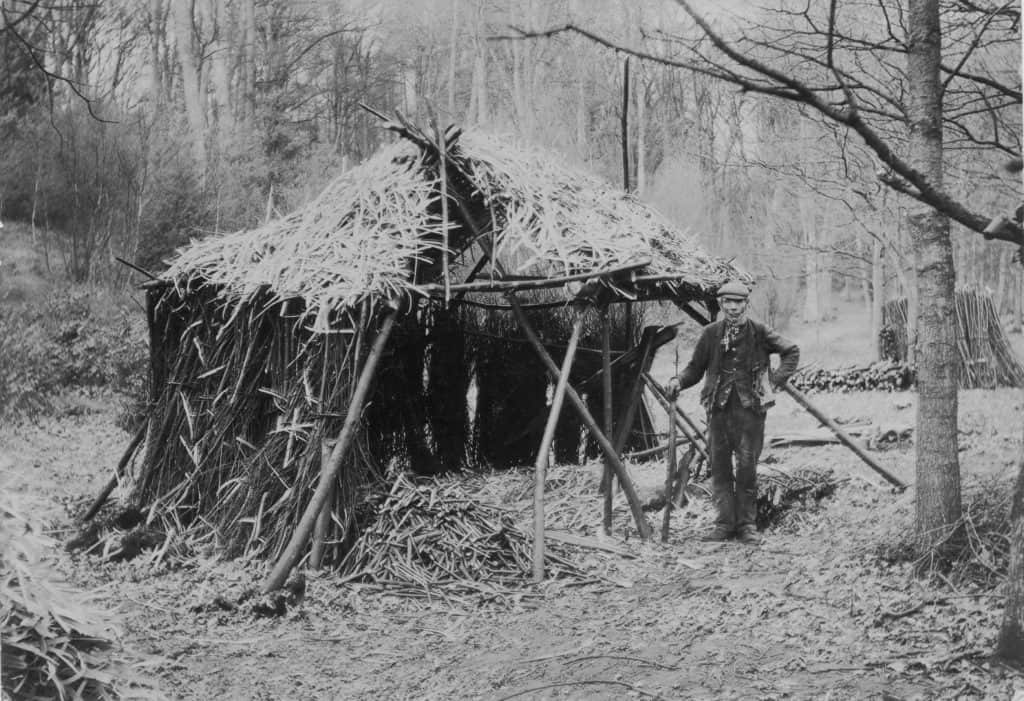In 1086 when the king decreed a survey be made of all lands in England, ‘Dorchinges’ was listed as belonging to the crown.
This survey, called the Domesday Book, reveals that the manor of Dorking had previously been the property of Edith, widow of Edward the Confessor, King of England from 1042-1066.
At the time of Domesday, the manor of Dorking had a church and 3 watermills on the Pipp Brook.
4 serf (landless labourer) families worked the lord of the manor’s land to the north of the Pipp Brook, ploughing with teams of 8 oxen. 13 cottager families occupied small plots, working for hire on the lord’s lands and grazing pigs on the Cotmandene. 38 families of villeins (who held enough land to support themselves in return for services to the lord) had homes on the tracks leading south from Dorking, on the slopes of Leith Hill and in the Capel clearings.
The landscape around the Manor was a mix of downs, heath, farm and woodland. As the population grew in the centuries after Domesday, land was put to the plough. The lord of the manor of Dorking made grants of land to the east and south of the settlement.

The swine of Dorking and the neighbouring manor settlements were driven down into the Wealden woodland for pannage: fattening on acorns and beech nuts.



Many traditional livelihoods survived until relatively recent times. (Images: Dorking Museum)

